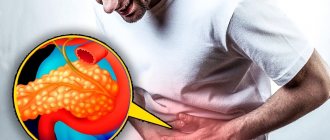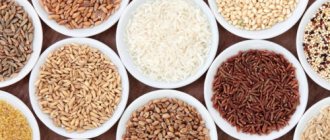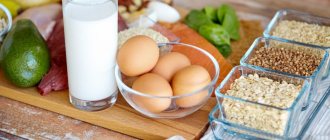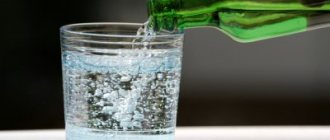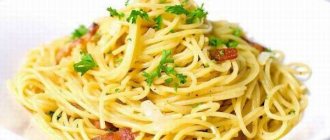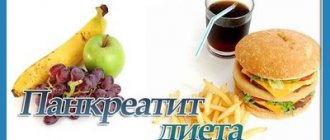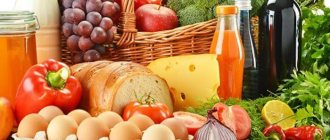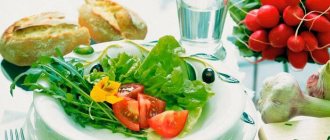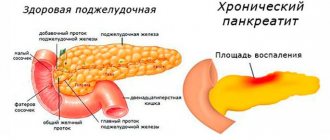For patients suffering from diseases of the pancreas and gallbladder, a rational, balanced diet will be the key to a successful recovery. Cottage cheese for pancreatitis is a truly irreplaceable product, including a lot of substances necessary to restore the structure of the pancreas.
Doctors and specialists in the field of dietary nutrition recommend consuming this product for pathologies of the stomach and pancreas. Animal protein is vital for the restoration of organ cells. This will be a comprehensive answer to the question of whether it is allowed to eat cottage cheese and curd dishes for diseases of the pancreas.
Basic rules of nutrition for pancreatitis
Diet is mandatory for those who have pancreatitis, otherwise no medicine will help.
Experts have developed rules that must be followed:
- if the disease is acute, then the diet should begin with fasting, it lasts from 2 to 4 days;
- you need to eat often, at the same time;
- portions should be small;
- avoid overeating;
- reduce the amount of confectionery products;
- dishes should include pureed foods that do not cause irritation to the mucous membranes;
- daily fat intake no more than 80 g;
- reduce the amount of salt to 10 g;
- reduce sugar consumption to a minimum.
Based on these rules, the daily menu is formed.
Diet recipes
There are many recipes that can add flavor to a rather limited diet.
Soup made with milk with the addition of pureed meat
Boiled beef must be pureed using an immersion blender and additionally rubbed through a sieve. Grate the boiled rice. Add the mucous broth and prepared cereal to the meat. Bring the mixture to a boil, cool slightly and season with lezon (egg beaten with milk). Season with a little butter before serving.
During inflammatory processes, it is not recommended to eat hot and cold foods; preference should be given to warm foods
Vegetable puree soup
Boil potatoes and carrots. Saute the zucchini in a frying pan until done. Grind the still hot vegetables, adding vegetable broth to the desired consistency. Bring the dish to a boil again and add a little salt.
Important! To improve the taste, you can add a little milk.
Chicken quenelles with cottage cheese
Pass the chicken breast through a meat grinder two to three times. Place cottage cheese into the minced meat. Mix the products. Add an egg and a little butter to them. Add a little salt. Cut into quenelles and steam. When serving, pour over sour cream or milk sauce.
Beef roll with omelette
Place an egg into the minced beef and add salt. Mix thoroughly. Spread it on a wet towel in a 2 cm layer. Place a steam omelette on top. Roll the meat into a log and cook on the steamer rack. The dish will be ready in about half an hour.
What is diet No. 5
Nutritionist M. Pevzner developed and tested a special diet that helps treat patients with pancreatitis. For decades, Diet No. 5 has effectively helped in the fight against illness.
During the day, the patient should receive the usual amount of proteins and carbohydrates. During the diet, the number of foods containing fat is sharply reduced. At the same time, there is less salt; no more than 10 g should enter the body during the day.
During the treatment period, the following products are prohibited:
The benefits of cottage cheese for gastrointestinal diseases
Cottage cheese is an excellent product obtained as a result of the natural fermentation of whole milk. Then this sour milk is placed in a water bath or simply heated over low heat. When the protein part of the product separates from the whey and gathers into flakes, it is strained and placed under a press to drain the remaining whey. The resulting product can be eaten even with pancreatitis - inflammation of the pancreas. The beneficial properties of fermented milk product are:
- Cottage cheese contains 12 vitamins, the most valuable among them are A, D, E and B vitamins. All vitamins from cottage cheese are easily absorbed by the body in full.
- Minerals and trace elements significantly influence metabolic processes in the body and contribute to the formation of bone tissue due to the high calcium content.
- Milk protein - casein - can completely replace the proteins that come with meat, but without the purines contained in meat. Therefore, in dietary nutrition it has no equal among suppliers of easily digestible protein.
- Amino acids relieve the liver and promote better functioning of the gastrointestinal tract as a whole.
- Lactic acid bacteria enrich the gastrointestinal tract with beneficial microorganisms and promote intestinal motility.
Due to proteins, minerals and vitamins, the product is indispensable for pancreatitis. Inflammation of the pancreas prevents the intake of carbohydrate foods for some time, and protein from meat products is more difficult to digest.
How to eat during acute pancreatitis
Acute pancreatitis is a dangerous disease, so comprehensive measures are needed to improve the condition. It must be remembered that dietary requirements are mandatory, otherwise this condition may lead to surgical intervention.
At the first stage of treatment, you should fast for several days. The duration of food refusal is from 2 to 4 days.
Only liquids are allowed. At this time, you can drink weak tea, prepare decoctions from rose hips, mineral water is suitable without gas.
The next stage is diet No. 5. The food is low in calories, salt and fat, which can provoke a new attack, are prohibited. Prepare all dishes liquid. You can add just a little bit of salt.
When creating a menu, it is best to keep a list of healthy and unhealthy foods before the chapters.
| types of products | allowed | forbidden |
| bread | crackers 50 g; |
|
| soups |
|
|
| meat dishes |
|
|
| eggs |
| hard boiled eggs; |
| liquids |
| sweet carbonated; |
| fish | lean fish; | fatty fish; |
| cereals |
|
|
| sweets |
| confectionery; |
| dairy |
|
|
| fruits | apples cooked in the oven; | other fruits, berries; |
| vegetables |
|
|
We recommend watching a video about nutrition rules for pancreatitis:
Contraindications
Dairy products are contraindicated if pancreatitis is accompanied by conditions such as:
- Intolerance to fermented milk products;
- Exacerbation of chronic intestinal diseases;
- The day before the operation;
- Some types of liver diseases;
- Kidney problems, including stones;
- Hepatitis.
Video on the topic: Is it possible to eat cheese if you have pancreatitis?
How to eat with chronic pancreatitis
Nutrition for this disease should help normalize the functioning of the diseased organ. You should listen to the advice of Diet No. 5.
Diet tips for chronic pancreatitis:
- food and liquids entering the body must be warm;
- Plan at least 5 meals during the day;
- avoid overeating;
- do not take long breaks between meals;
- reduce the amount of sugar;
- remove fresh bread.
All dishes that are prepared by frying are strictly prohibited.
To form a healthy diet, you should know the list of foods that will help you get better or worsen your health.
Table of permitted and prohibited products:
| products | |
| allowed |
|
| prohibited |
|
If you have questions, it is recommended to discuss the use of certain products with your doctor.
Dairy products in nutrition
Fermented milk products contain about 120 types of useful substances, which are represented by vitamins, fatty acids, mineral elements, and enzymes. Thereby:
- Flatulence is reduced;
- Metabolism is stabilized;
- The functioning of the gastrointestinal tract is normalized;
- Pathogenic flora is suppressed.
In the chronic course of the disease, consumption of dairy products accelerates the restoration of the mucous tissue of the gastrointestinal tract, and also relieves inflammation of the gland.
Cottage cheese
For pancreatitis, cottage cheese can be consumed not only as part of various dietary dishes, but also as an independent product. The pancreas and digestive tract organs are not irritated by the proteins and fats of the dairy product. This is achieved due to the fact that cottage cheese is absorbed quite quickly.
There are several requirements that cottage cheese for patients with pancreatitis must meet:
Cottage cheese must be fresh;
Before purchasing in a store, be sure to study the information about the product - fat percentage, composition, release date.- The consistency should be pasty;
- After the expiration date, the product is not allowed for consumption;
- In no case should spices that have a juice effect be added to the product when preparing dishes;
- It is prohibited to prepare cottage cheese by frying using a large amount of oil.
Cheese
Unfortunately, during exacerbation of pancreatitis, eating cheese is strictly prohibited. This is due to the fact that cheese is a dense product that does not correspond to a diet based on the principle of mechanical sparing. In addition, it is also too fatty and contains extractive substances that stimulate pancreatic secretion. And this should under no circumstances be allowed during an exacerbation.
A month after the exacerbation, you can introduce cheese into your diet. Initially, soft varieties of cheeses are included (unsalted, low-fat, mild), then semi-hard. First, you need to eat one small piece of cheese (about 15 grams), later the dosage can reach up to 100 grams of product per day.
Cheeses for pancreatitis.
Sour cream
Sour cream is a dairy product that has enormous fat content. With an exacerbation of the chronic phase of the disease or the acute stage, the use of this product can create a large load on the gland and the gastrointestinal tract system. Even a small spoon can cause an aggravation.
The inclusion of this product in dishes is allowed only if pancreatitis is in stable remission. It is necessary to verify the presence of poisoned fat in the feces by testing.
The ideal schedule for introducing sour cream into food is considered to be 1 tsp. in one day. This product must be chosen only of high quality: it should in no case be expired, the fat content is 20%. The composition of sour cream should not include anything other than milk, sourdough and cream.
This product should only be taken when prepared with other dishes. As a rule, it is taken with vegetable puree, cottage cheese, sauces, puddings, casseroles, soups, and salads. You should absolutely not eat fried mushrooms with sour cream or fish in this product.
Diet for pancreatitis in children
Parents often have a question: what kind of diet for pancreatitis does a sick child need? The diet that helps improve the baby’s condition differs little from the adult’s menu. But there are some peculiarities that need to be taken into account when feeding children.
Children's nutrition rules:
- Give food and drink warm, feed more crushed foods, for example, mashed potatoes;
- the diet must contain all the components necessary for normal growth and development;
- even after the acute condition has resolved, it is imperative to adhere to dietary restrictions;
- prohibit children from drinking carbonated drinks;
- fast food dishes.
If the sick child is under 3 years old, it is recommended to wipe and chop the food. You should remove any citrus fruits and freshly squeezed juices from your diet. Children should not be given berries with small seeds or a rough shell. There is no need to give fresh vegetables.
A child over 3 years old attends children's educational institutions and has contact with peers. First of all, you need to take care of food at school and kindergarten. To do this, talk to a medical professional and notify the teacher or educator.
The most difficult thing is to protect your child from soda, chips and other dangerous foods. When attending birthdays and children's parties, care should be taken to ensure that the child does not break the diet. The baby needs to be explained the need for dietary restrictions.
Benefits and possible harm
The composition of the cottage cheese obtained from milk fermentation includes 6 vitamins, among which the top three are riboflavin (B2) and nicotinic acid (PP), which are involved in lipid-hydrogen metabolism, and retinol (A), which is a strong antioxidant that increases the body's defenses.
100 g of low-fat cottage cheese contains 18-20 g of protein, necessary for organ growth and cell restoration.
Milk protein is easier and faster absorbed by the body than other plant and animal proteins. Thanks to this circumstance, the body is filled with minerals and amino acids in record time, and little energy is expended.
Cottage cheese, when consumed regularly, normalizes the microflora in the body and improves human health, so it is recommended for children and the elderly, pregnant women and those who suffer from diseases of the central nervous system and gastrointestinal tract.
But a dairy product can sometimes cause the following harm to the human body:
- cottage cheese causes allergies in some people due to individual intolerance to its ingredients;
- If you purchased a low-quality product on the market and ate it raw, bacteria may enter your intestines and cause upset or bloating of the organ. The same misfortune will befall a person who eats cottage cheese that has expired;
- people who are addicted to delicious food with a high fat content can forget about a slim figure;
- those who prefer a low-fat product should know that it contains less vitamins E and A, and lecithin, which transmits nerve impulses. Due to the lack of fat in cottage cheese, calcium is less absorbed by the body. Therefore, people who want to be healthy need to alternately include both fatty and low-fat foods in their diet, or add calcium-rich cheese, sesame seeds and sea fish to a low-calorie dish;
- If a healthy person likes to eat cottage cheese every day, then it will also have a negative effect on the body, which will accumulate more protein than necessary.
We recommend reading: Is it possible to drink kefir if you have pancreatitis?
Therefore, when using a fermented milk product on the menu, do not forget about its quality, calorie content and consumption rate.
People who want to be healthy need to add calcium-rich sesame seeds to low-calorie cottage cheese.
Menu for 7 days for patients with chronic pancreatitis
For patients, it is recommended to create a menu in advance; this will allow you to eat a balanced diet, while your health will significantly improve.
Menu option for the week:
| day of the week | dishes |
| Monday |
|
| Tuesday |
|
| Wednesday |
|
| Thursday |
|
| Friday |
|
| Saturday |
|
| Sunday |
|
Knowing the basic requirements for dishes, you can create your own menu.
What can you eat if you have inflammation of the pancreas?
Dishes from the following approximate list of permitted products are prepared by chopping on a grater or in a blender. Among them:
- soups in vegetable broth, seasoned with sour cream, including butter, vermicelli, eggplant, pumpkin, carrots, zucchini and potatoes;
- porridge from semolina, oatmeal, rice and buckwheat;
- hard cheeses;
- skim milk and the same cottage cheese;
- vegetables and fruits;
- crackers, stale bread;
- dietary varieties of meat and fish.
How to choose the right product
When choosing, the main criteria are as follows:
- The product must be fresh, this is a prerequisite. From the time of preparation, it can be stored in the refrigerator for no more than 2-3 days. To be sure that it is really fresh, it is better to use homemade cottage cheese. There are several cooking methods. The process itself is not labor-intensive; you can prepare fresh portions daily, which is simply ideal for pancreatitis.
- The fat content of the product during the period of incomplete remission should not exceed 3%. In order to get such cottage cheese at home, you need to buy milk whose fat content does not exceed 2.5-3%. You should know that 1 liter of milk can produce no more than 250 g of finished cottage cheese.
Taking cottage cheese in a store, trusting the expiration date and stated fat content, is risky to say the least, especially during a period of incomplete remission. And later, it’s not worth the risk.
It is also not recommended to buy from the market. You won’t be able to determine the fat content, and freshness remains a question mark.
Goat milk
The peculiarity of this dairy product is its low fat content and high content of nutrients. For patients with pancreatitis, nutritionists and therapists strongly recommend adding this product to their usual diet.
Before taking it, you should know a few rules that will allow you to get the greatest benefit, protect against side effects and make the product tasty.
- Goat milk is consumed warm.
- Boiling is required. To digest a raw product, the body will need much more energy, which is fraught with additional stress on the immune system and gastrointestinal tract.
- It is best to combine milk with other dishes and products. This makes the animal fats of the product easier to digest.
- The first three methods should be accompanied by diluting milk with boiled water in a proportion of equal parts or 1 to 2 parts of water.
- The first doses should not exceed 100 ml, even better than 50 ml, in order to determine exactly how the gastrointestinal tract will react to goat milk. The maximum dose at the end of this regimen is 200 ml.
- It is recommended to take it in the morning on an empty stomach, as goat milk has antibacterial properties, which has a soothing, healing and protective effect on the pancreas.
- It is best to use the services of a nutritionist, who, after certain tests and examination, will determine the optimal dose, dosage regimen and duration of therapy.
What to do in case of lactase deficiency
A digestive enzyme such as lactase increases the absorption of dairy and fermented milk products. Deficiency of this substance is a fairly common problem among adults, as it accounts for approximately 15-20%. A deficiency of this substance is noticed very simply:
- The reaction to dairy products from the gastrointestinal tract is accompanied by increased fermentation.
- Dyspepsia occurs, which is manifested by pain along the intestinal tract, bloating, and diarrhea.
In most cases, the cause of milk intolerance is pathology of the small intestine, which worsens with the development of pancreatitis. If there is a negative reaction of the body to whole milk, you should try drinking it in diluted form, or as a fermented milk product. Adding whole milk to jelly, tea, soup and other dishes also helps to cope with the problem quite well.
